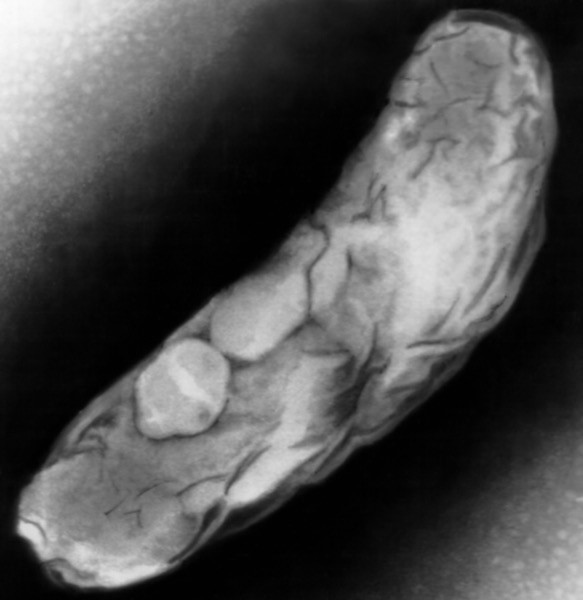IBM uses resources of World Community Grid to fight tuberculosis

IBM launched the World Community Grid (WCG) back in 2004. WCG is a global community that allows any user of a PC, smartphone or tablet to provide unused computing power of their device for the benefit of the project. Currently, 750,000 people and 470 organizations from 80 countries of the world are WCG participants. The total number of projects in WCG is 26.
The voluntary computing project works on the BOINC platform, the principle of operation of the WCG is similar to the way the distributed computing network @SETI functions . Only in the case of WCG, participants are not engaged in the search for extraterrestrial life, but on earth problems - research in the medical field (the fight against cancer, AIDS, flu).
Now IBM has decided to use the resources of the WSG and to combat the "silent killer" - tuberculosis. To do this, launched a separate project “Help Stop TB”, led by the University of Nottingham from the UK. The goal of the project is to study the bacteria of tuberculosis in order to determine the best method of fighting the disease. As is known, the causative agent of tuberculosis is the bacterium Mycobacterium tuberculosis (M. tb).
')
The main part of the system is placed in the cloud IBM SoftLayer . According to IBM representatives, if all users of electronic devices provided the service with unused capacity of their devices, then the overall performance of such a system would be much higher than the performance of the fastest supercomputer at the moment.
“With the help of World Community Grid volunteers, we plan to model various types of mycolic acid in the bacterial cell walls in order to understand how these structures affect the functioning of the bacterium. The baseline study will allow scientists to develop a treatment method aimed at eliminating the pathogen protection system, ”says Dr. Anna Croft, a leading research expert of the study. Mycolic Acids is a generic name for a group of long-chain branched fatty acids. They have the general formula R1-CHOH-CHR2-COOH, cross-linked, and contain 60-90 carbon atoms per molecule (C60-C90). They are an exceptional component of the mycobacterial cell wall, including the pathogenic Mycobacterium tuberculosis.

Mycobacterium tuberculosis (an increase of 35,000 times)
“This will help us develop a more complete and seamless model of the cell wall and better understand the role of mycolic acids in the system of protection of the causative agent of tuberculosis,” continues Croft. According to her, tuberculosis is one of the most dangerous killers in the world. Due to the fault of Mycobacterium tuberculosis, in 2014 alone, more than 9.6 million cases of tuberculosis and more than 1.5 million patient deaths were diagnosed. WHO declared tuberculosis one of the most deadly infectious diseases. This bacterium is very resistant to the effects of drugs and protection of the human immune system due to the structure of its cell walls, which makes it difficult to treat the disease. If you solve the problem of the vulnerability of bacteria - it will help solve the problem of tuberculosis.
Mycobacterium is very stable in the environment. So, at a temperature of 23 ° C in a humid and dark place, it persists up to 7 years. In a dark and dry place (when the patient’s sputum is dry or in dust), the office remains up to 10-12 months, in street dust (that is, in a dry and bright place) the Koch wand lasts up to 2 months, in the pages of books - up to 3 months, water - up to 5 months. In the soil MBT is stored for up to 6 months, in raw milk - up to 2 weeks, in butter and cheese - up to a year.
To date, it is believed that mycobacterium tuberculosis in the sputum remains viable when the latter is boiled openly within 5 minutes. Mycobacteria are sensitive to agents containing chlorine (bleach, chloramine, etc.), tertiary amines, and also to hydrogen peroxide.
Any user can become a member of the WCG system. For this you need to register at this address . After registration, the participant selects the project for which he wants to provide his computer resources. Having joined the network, the user receives a separate computing task on his computer (the project is divided by IBM specialists into millions of subtasks). After completing the task, the PC sends the calculation results to the server and receives a new task. Calculations are performed only when the computer is not involved (thus participation in the project does not interfere with the performance of basic tasks). The results of the calculations sent to the server are automatically connected to the results of other tasks, and form the overall result.

Perhaps the free processor time of a large number of electronic devices will help, nevertheless, to overcome this most dangerous disease, with which humanity has been struggling for hundreds of years. So far, the process is taking place with varying success, since Mycobacterium tuberculosis is indeed extremely resistant to external influences. If you can find a gap in the protection of the cell walls of the causative agent of tuberculosis, the harmful bacterium will be defeated forever.
Source: https://habr.com/ru/post/281016/
All Articles